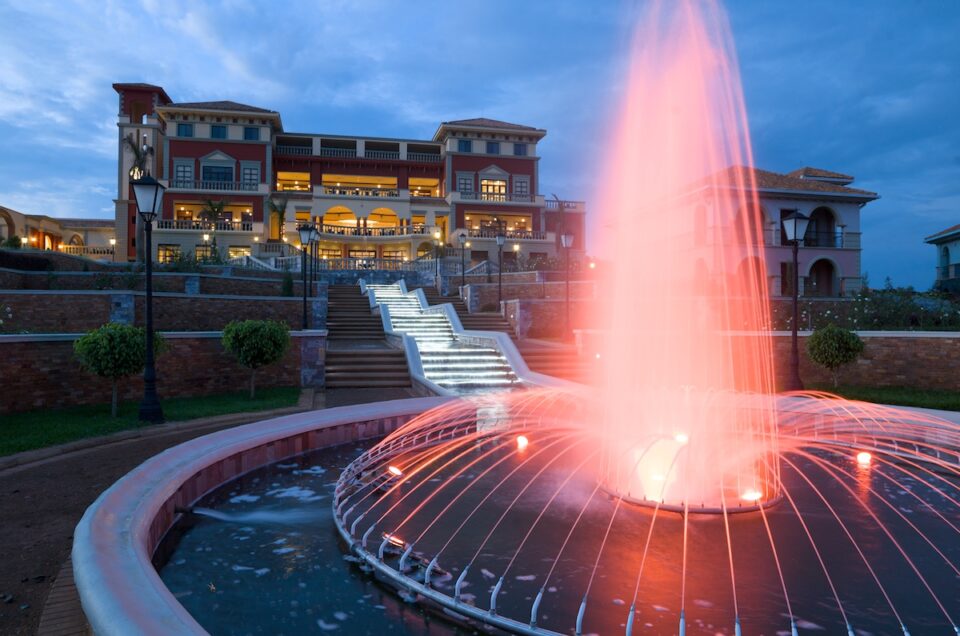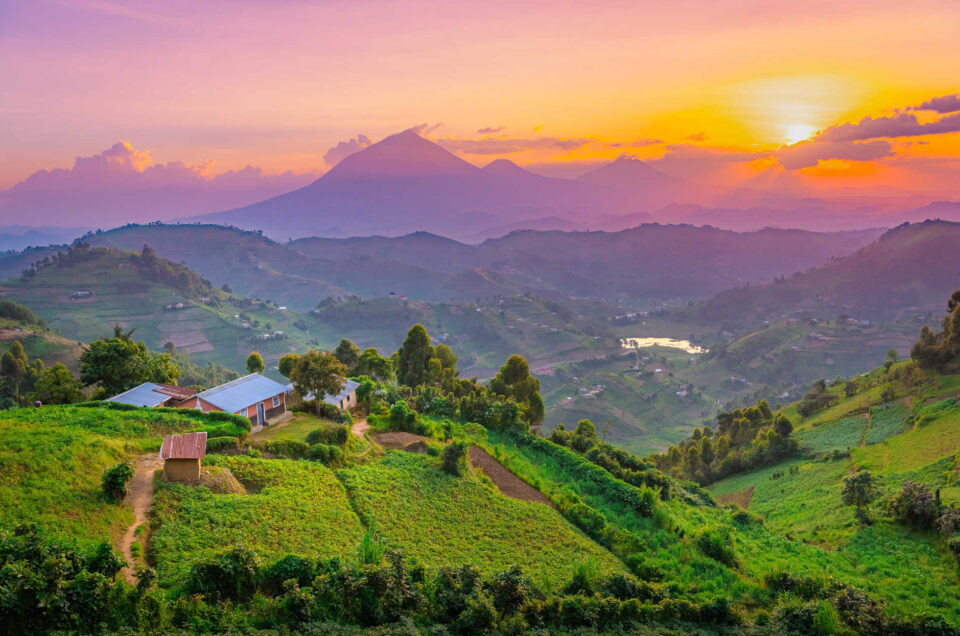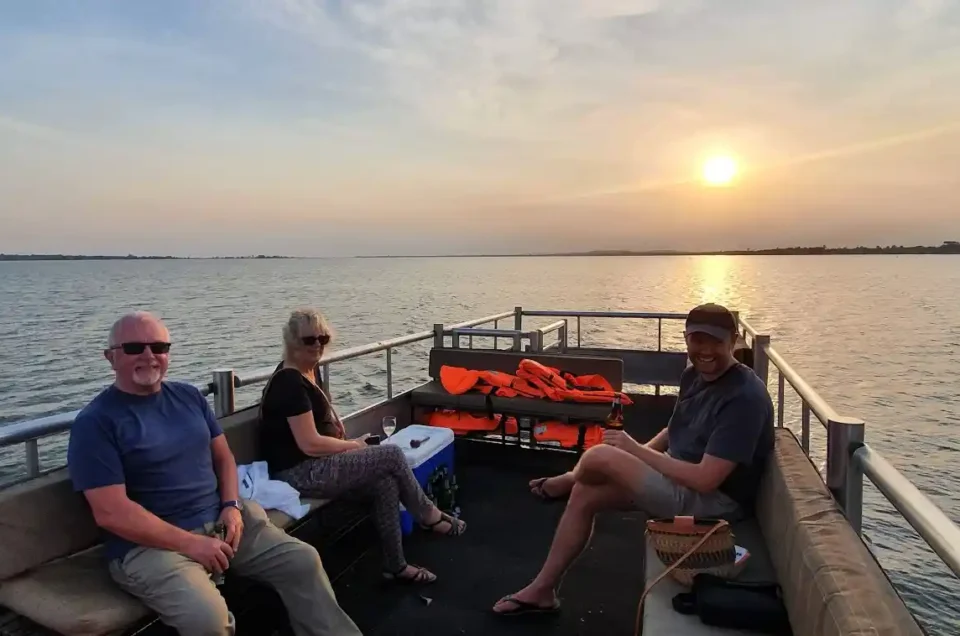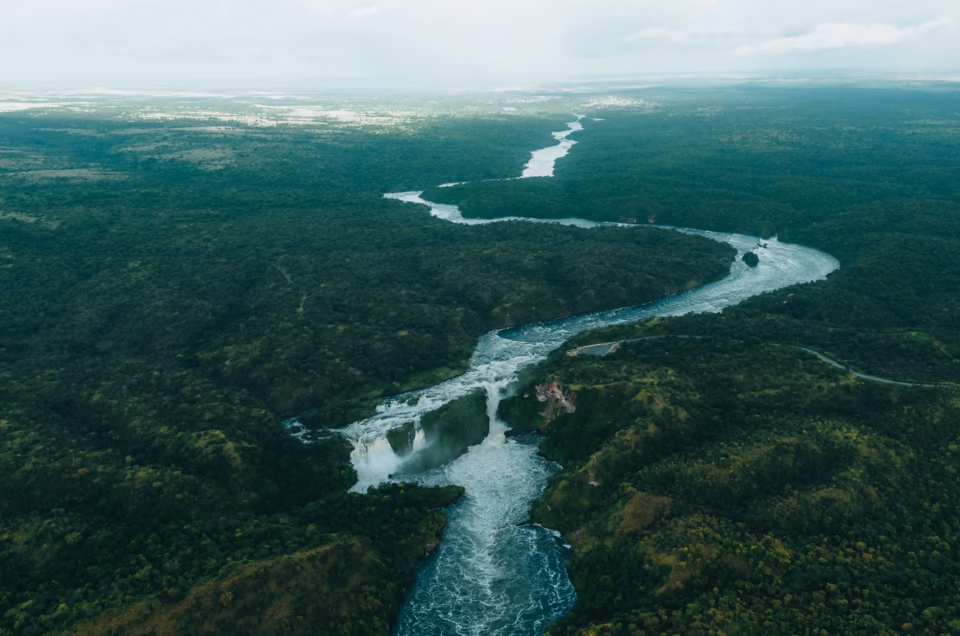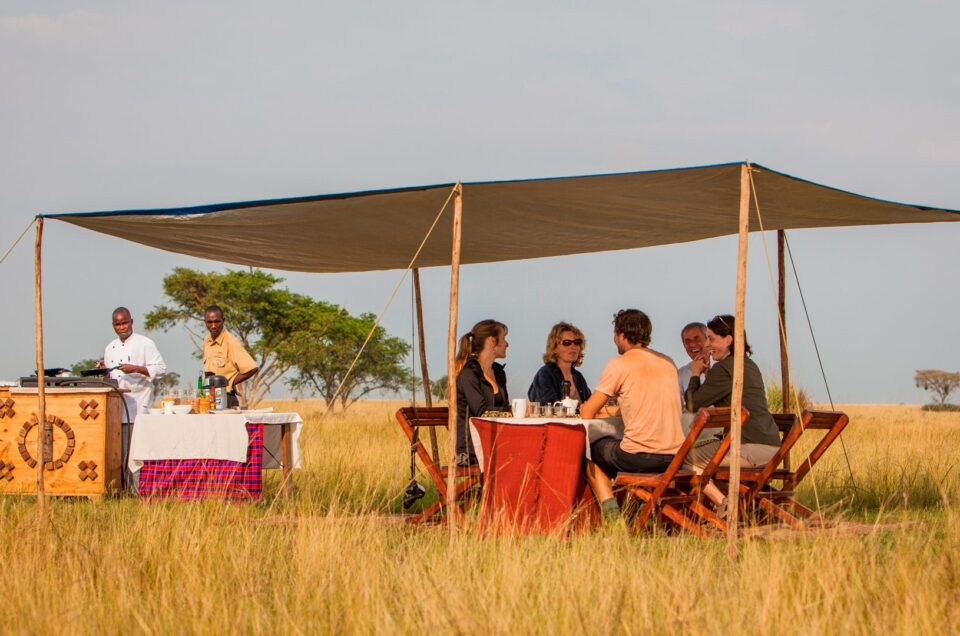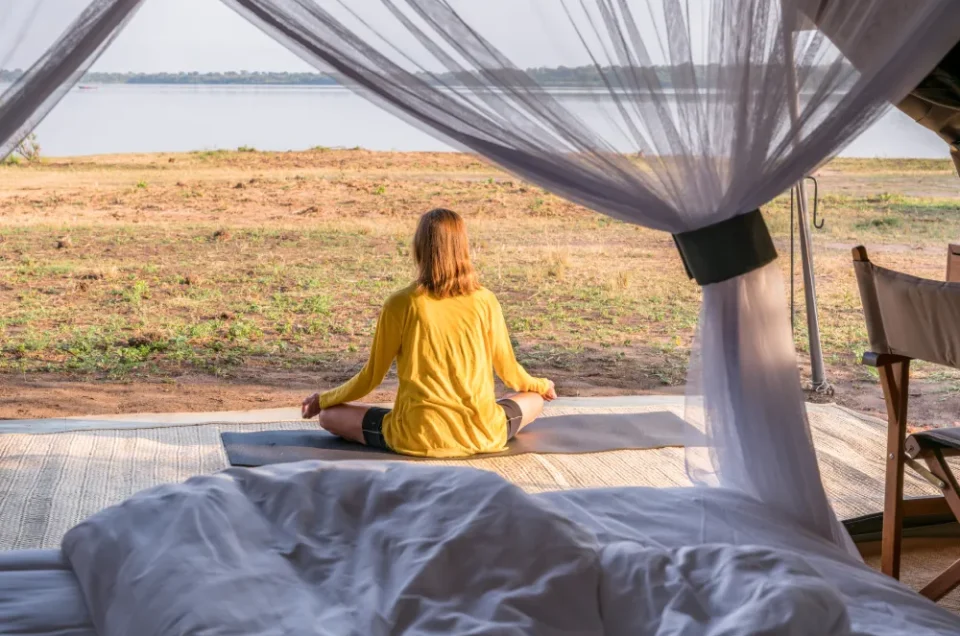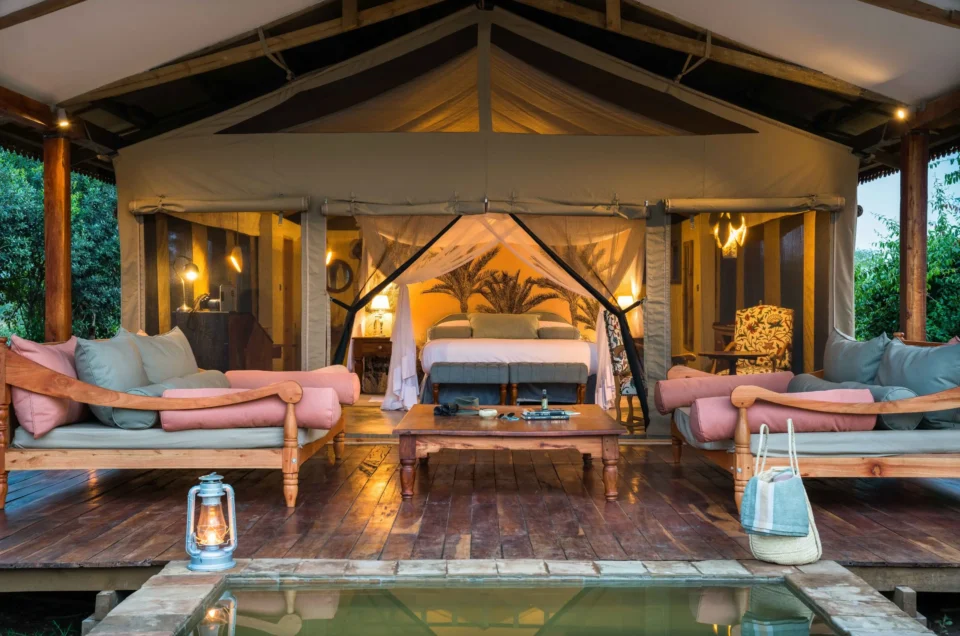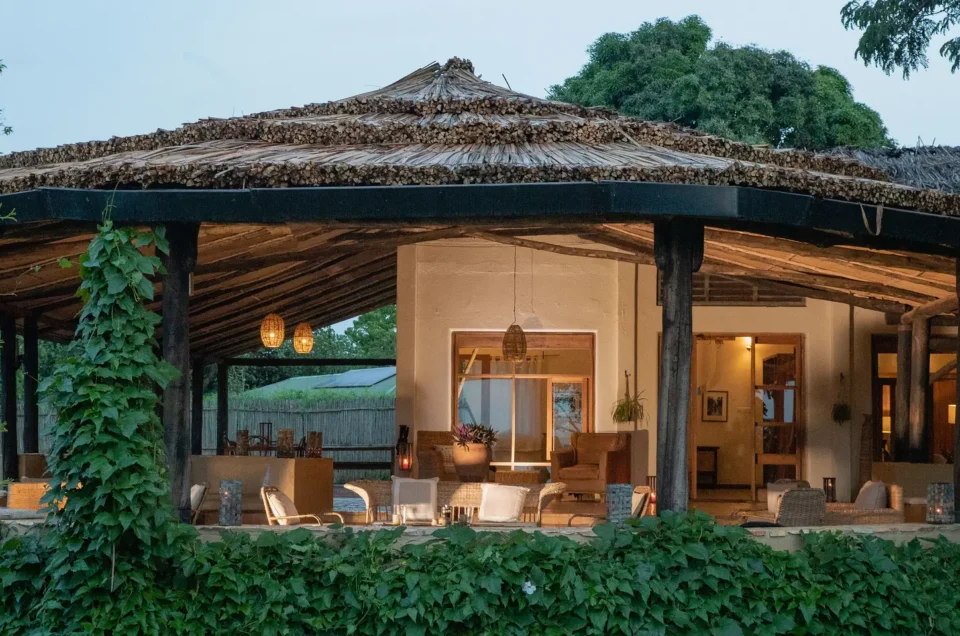Categories
- Accommodation
- Accommodation at Kibale Forest
- Budget accommodation at Kibale
- Budget accommodation in Uganda
- Budget Hotels in Entebbe
- Budget Murchison Falls Accommodation
- Bwindi Guides
- Bwindi National Park Guides
- Entebbe Hotels
- Exclusive Lodges In Murchison Falls National Park
- Exclusive Lodges in Queen Elizabeth National Park
- High End Accommodation At Kibale
- Kibale
- Luxury accommodation at Kibale
- Luxury Accommodation in Queen Elizabeth National Park
- Luxury Hotels In Entebbe
- Luxury Murchison Falls Accommodation
- Midrange accommodation at Kibale
- Midrange Hotels In Entebbe
- Midrange Murchison Falls Accommodation
- Murchison Falls Guides
- Murchison Falls Lodges
- News
- Popular
- Queen Elizabeth Guide
- Queen Elizabeth National Park Accommodation
- Semi-Luxury Entebbe Hotels
- Travel Guide
- Uganda Honeymoon Lodges
- Uncategorized
Queen Elizabeth National Park
Queen Elizabeth National Park
Queen Elizabeth National Park in southwestern Uganda is a fascinating safari destination. Unlike many African parks and reserve where human settlements are banned, this park is a UNESCO Man and Biosphere Reserve.
When it was established in 1952, the existing villages were allowed to remain. Today, locals still grow coffee, tend small farms, fish, and mine salt from the crater lakes, creating a rare and peaceful balance between community life and conservation.
Spanning 1,978 square kilometers along the Equator in the Great Rift Valley, the park is a haven of diverse landscapes—savannah, rainforest, crater lakes, and wetlands—all set against the dramatic Rwenzori Mountains or the Mountains of the Moon.
Queen Elizabeth National Park is one of the most biodiverse areas in East Africa and a favorite stop for travelers heading to mountain gorilla trekking destinations of Bwindi and Mgahinga. Wildlife includes four of the Big Five, with rare tree-climbing lions in the Ishasha sector, large herds of elephants and buffalo, and frequent leopard sightings.
The Kazinga Channel offers amazing boat safaris where hippos, crocodiles, and water birds gather in huge numbers. Another hidden gem is Kyambura Gorge—a dramatic, 100-meter-deep crack in the Earth’s crust, cloaked in dense forest and home to the elusive “Lost Chimpanzees,” a small, isolated community rarely seen by most visitors.
Birdwatchers are especially rewarded here, with over 610 recorded species—the highest count in any African park.
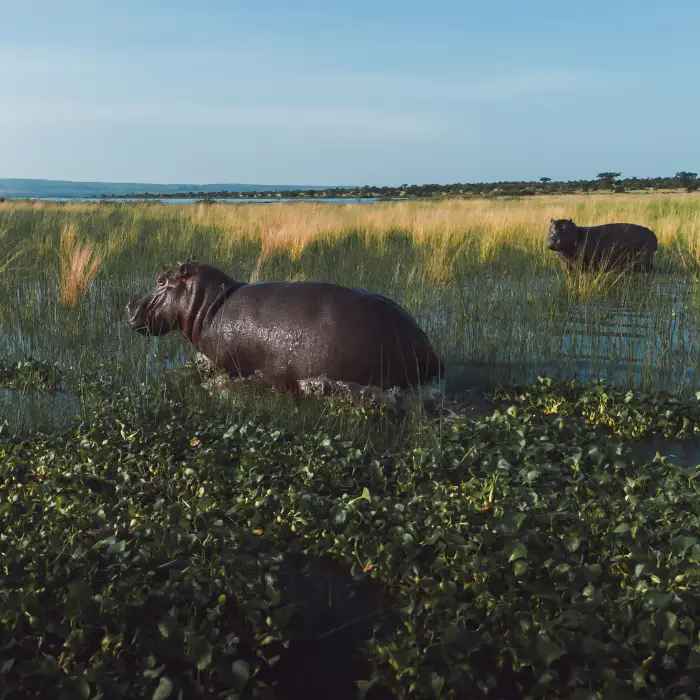


Reasons To Visit Queen Elizabeth National Park
1. Kazinga Channel Boat Cruise
The Kazinga Channel is a 32-kilometre-long natural waterway that connects Lake Edward and Lake George in Queen Elizabeth National Park.
This place is famous for having the largest concentrations of hippos in the world! On the boat cruise, you will float gently past big pods of hippos resting in the water—only their eyes and noses peek above the surface. Huge crocodiles lie in the sun along the shore.
You will also see hundreds of birds flying and singing all around—more than in most places in Africa! Elephants often walk down to drink from the water, and buffaloes love cool off in the shallow parts. This peaceful boat ride takes two hours and is one of the best ways to see wild animals up close.
2. Game Drive
A game drive in Queen Elizabeth National Park is a fun and exciting trip that lasts 3 to 4 hours.
You won’t see rhinos here, but you can see lions, elephants, leopards, and buffaloes. Go early in the morning. You might see lions waking up as the sun rises. You’ll see huge herds Uganda kob (a type of antelope) grazing, and elephants walking slowly through the trees. The beautiful plains of Kasenyi are a great place to see animals.
If you are lucky, you might see a leopard hiding in the grass or a hyena going back to its home after hunting at night. You may also spot a giant forest hog—one of the most interesting pigs on Earth! It is big, dark, and hairy, and it looks very different from farm pigs. It lives in the forest but sometimes comes out to eat grass.
3. Predaor Tracking
Go on a special trip with a park expert to find lions and leopards!
This is not a normal safari. You will help track big cats and learn how they live, hunt, and move. Some lions and leopards wear radio collars. These collars send signals, so it’s easier to find them—especially lions. Leopards are harder to see because they like to hide, but the search is always fun and exciting!
Because you are with a scientist, you can leave the main roads and go deep into the wild. You will follow clues and signals, just like real animal researchers do! This is a great way to learn about wild lions and how they survive. And by joining, you help protect them too!
4. Tree-Climbing Lions
In the far south of Queen Elizabeth National Park is a place called Ishasha.
Here, you can see something very special—lions that climb trees! Most lions stay on the ground, but these ones like to rest high in big fig trees. They climb to stay cool, avoid flies, and catch the breeze.
As you drive through Ishasha, look up! You might see lions lying on the branches like lazy cats, with their legs and tails hanging down. The best time to see them is during the hottest part of the day, when they go up to find shade. Seeing a lion in a tree is amazing—and something you’ll never forget!
5. Bird Watching
Queen Elizabeth National Park is one of the best places in Africa to see birds.
This 1978 square kilometer park has over 600 types of birds—that’s a lot! Everywhere you go, you’ll see birds flying, singing, or hiding in trees and bushes. You might spot a giant eagle in the sky or the funny shoebill with its big beak standing in the swamp. The best time to go is early in the morning.
The air is cool, and the birds are singing their morning songs. You might even see Uganda’s beautiful bird, the grey-crowned crane, dancing in the grass.
6. The Chimpanzees of Kyambura Gorge
Kyambura Gorge is a deep, green crack in the earth’s crust, about 100 meters deep, inside Queen Elizabeth National Park. The BBC Travel called it the “Valley of Apes” because wild chimpanzees live here!
When you go chimpanzee tracking, you’ll walk through thick underground forest, cross small streams and maybe climb over fallen logs. It’s a fun and exciting adventure! You might see chimpanzees swinging from the branches or hear their calls as they talk to each other.
7. Explosion Craters
A long time ago, big volcano explosions happened in Queen Elizabeth National Park.
Instead of lava, they made huge round holes in the ground called explosion craters. There are 41 of these craters, and 28 of them are now beautiful lakes!
The biggest place with many craters is called Katwe Crater Field. It looks like a green moon with hills and valleys to explore. One of the most famous lakes here is Katwe Salt Lake. People have collected salt from this lake for hundreds of years.
Salt is very important for cooking and saving food, and the local communities still work here using old, traditional methods. You can drive or walk around the craters and see amazing views of the park and the far-away Mountains of the Moon. It’s a cool place to have fun, learn about nature, and see how people live and use the Earth’s gifts!
8. The Equator
A popular stop near Queen Elizabeth National Park is the Equator—the invisible line that divides the Earth into two Equal parts (Northern and Southern Hemispheres).
Here, you can see a big Equator monument that marks the exact spot where the line crosses Uganda. It’s bright and colorful, making it easy to find and great for photos!
Did you know the Equator crosses 13 countries all around the world? These include Uganda, Kenya, Ecuador, Brazil, and more! Also, at the Equator, water can spin in different directions depending on which side you are. And the sun is directly above you at noon during certain times of the year!
9. Maramagambo Forest
Maramagambo Forest is a very old rainforest in Queen Elizabeth National Park.
Its name means “the end of words.” Long ago, some young people got lost in the forest. When they came out, they were so tired and shocked they couldn’t speak! Now, you can take a walk in the forest with a guide.
You will see black-and-white monkeys jumping in the trees and see many birds. On the ground, you might see colorful butterflies, little bugs, and shy animals called duikers.
10. Culture
Unlike many other African parks where people are not allowed to live inside, Queen is different.
It is part of a special UNESCO Man and Biosphere Reserve, where wildlife and local communities all live together in harmony. When the park was created in 1952, about a dozen villages were already inside the area, and the people were allowed to stay.
These local communities live simply by growing bananas, farming small lands, mining salt, and fishing for Nile tilapia, lungfish, mudfish, and catfish. What makes this park even more special is the strong local culture. Inside the park, women’s coffee cooperatives work hard to grow and sell high-quality coffee. These cooperatives help women earn money, support their families, and build their communities.
The Kikorongo Women’s Community is another inspiring group. These women come together to create beautiful crafts and support each other while preserving their traditions.
Queen Elizabeth National Park Safaris
Queen Elizabeth National Park Travel Guides
Our Trusted Partners






